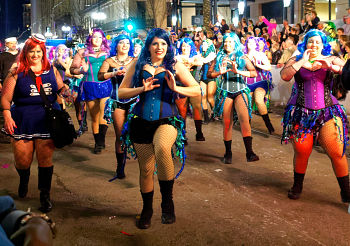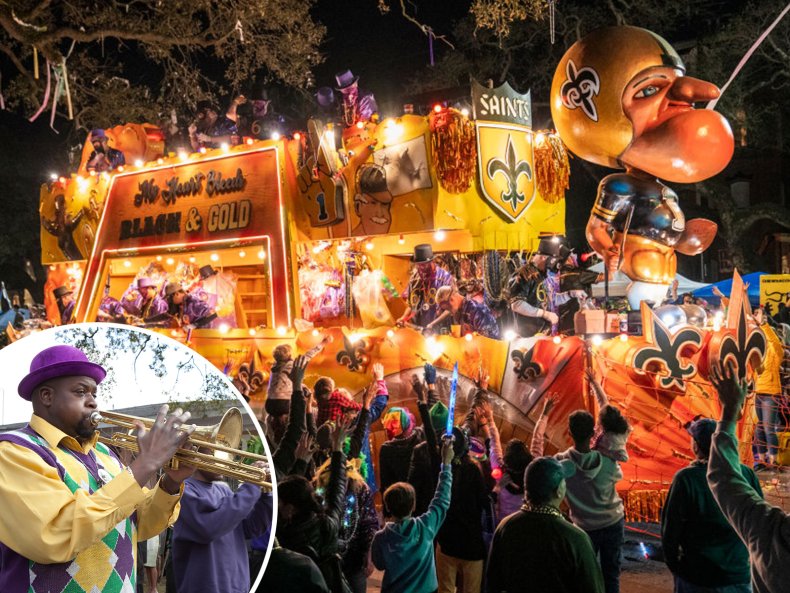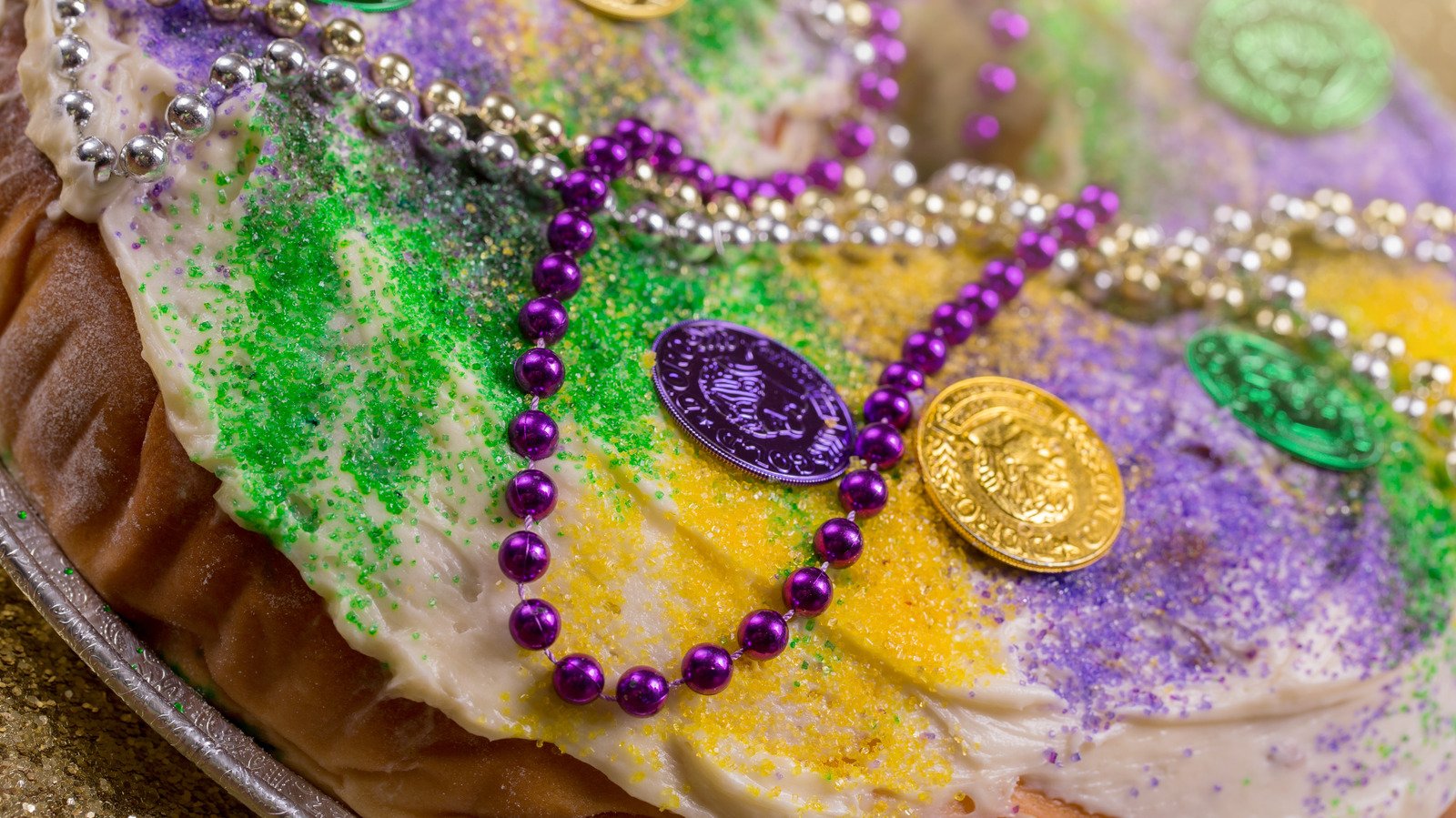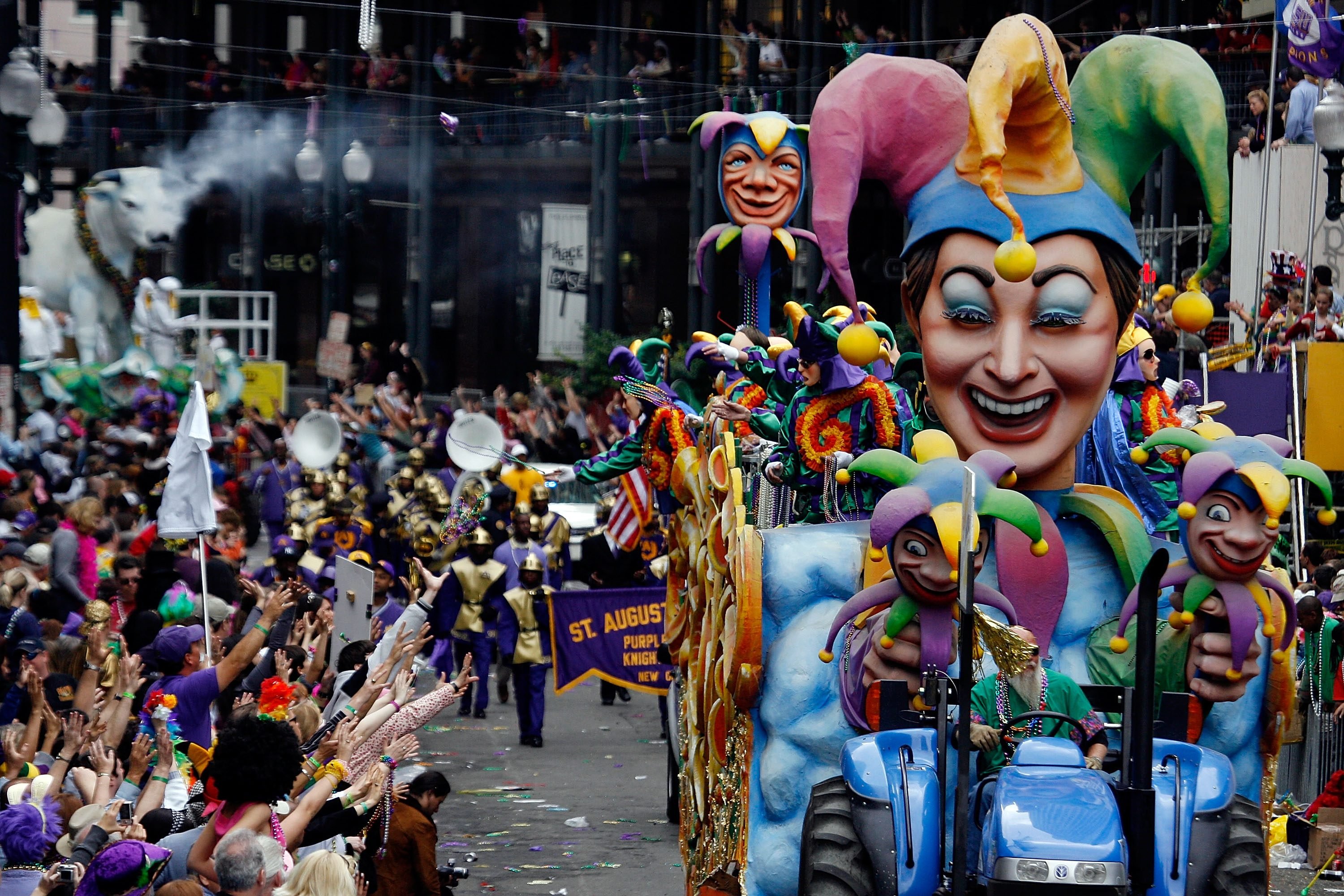Gallery
Photos from events, contest for the best costume, videos from master classes.
 |  |
 |  |
 |  |
 |  |
 |  |
 |  |
Lundi Gras. French for Fat Monday, Lundi Gras is the day before Mardi Gras. It was celebrated from 1874 to 1917 with Rex’s arrival by steamboat. In 1987, the custom was revived and now Lundi Gras includes parades, concerts and Carnival activities staged by both Rex and Zulu. Rex. One of the oldest krewes still parading. Rex rolls on Fat Tuesday. It's become a mantra of Mardi Gras throughout the years. Lundi Gras: yet another French term that means "Fat Monday." It's the day before Mardi Gras (Fat Tuesday). The name didn't achieve popularity until the late 1980s. It originally celebrated the arrival of the king of Rex by boat, kicking off Mardi Gras. [Courtesy of dsb Nola/Wikimedia Commons] Mardi Gras. Mardi Gras, also called Fat Tuesday, is a holiday celebrated the day before Ash Wednesday. Mardi Gras is a French term meaning “Fat Tuesday”, referring to the practice of the last night of eating rich, fatty foods before the fasting of the Lenten season. Prior to that week, various parades roll in neighborhoods across the city (mostly on weekends) beginning on January 6th. The most historic parades include Proteus on Lundi Gras, and Rex and Zulu on Fat Tuesday. The largest parades are Endymion on the Saturday before Mardi Gras and Bacchus on the Sunday before Mardi Gras. On the day before Mardi Gras beginning in 1874, Rex, the King of Carnival, would arrive by boat at the riverfront and with great pomp. The King and his royal court would travel from the river to City Hall in grand carriages where the mayor and various city officials would present Rex with the keys to the city and grant him temporary rule of the city beginning at sunrise on Mardi Gras morning. The three days before Ash Wednesday is also known as “Shrovetide,” starting with Quinguagesima Sunday and ending on Mardi Gras . Quinguagesima meant the fiftieth day before Easter, or specifically the last Sunday before Ash Wednesday. Shrove is the past tense of shrive and is an Old English word meaning “to repent.” The Monday immediately before Mardi Gras Day – also called Lundi Gras, “Fat Monday,” or “Shrove Monday” – holds its own ever-evolving traditions and celebrations. Prior to 1987, Monday was typically a day of rest, a welcomed break between the weekend and Mardi Gras Day. But Mardi Gras is an entire season, often called Carnival. It begins 12 days after Christmas on Jan. 6 and lasts until Fat Tuesday, or the Tuesday before Ash Wednesday. What is the day before Mardi Gras called? Ash Wednesday. What day comes after Mardi Gras? Nice, France. Where was the first known carnival celebration? Alan and Robin Mardi Gras and Fat Tuesday are the same day, and they take place on March 4 in 2025. Mardi Gras marks the end of the pre-Lenten season. Fat Tuesday is a day of feasting before the fasting of Lent Mardi Gras is another name for Shrove Tuesday, and it’s a day of general excess and merrymaking for the same reason: it’s the final day before Ash Wednesday and the start of Lent. You’ve also likely heard of carnival in relation to Mardi Gras, which comes from carnelevare, or “a removing of meat.” Mardi Gras is the climax of Carnival season and is celebrated the day before the Christian season of Lent begins on Ash Wednesday. In French, Mardi Gras means “Fat Tuesday,” another name for When Is Mardi Gras? Mardi Gras is traditionally celebrated on “Fat Tuesday,” the Tuesday before Ash Wednesday and the start of Lent. In many areas, however, Mardi Gras has evolved into a week Mardi Gras in New Orleans, also known as Carnival, has been in full swing since Jan. 6 and will close with a grand, final celebration on March 4, better known as Fat Tuesday. Originating from While the dates and exact celebrations of Carnival vary by location, the United States celebrates Mardi Gras beginning 10 days before Shrove Tuesday, also called “Pancake Tuesday” or Mardi Gras is the climax of Carnival season and is celebrated the day before the Christian season of Lent begins on Ash Wednesday. In French, Mardi Gras means “Fat Tuesday,” another name for Mardi Gras (UK: / ˌ m ɑːr d i ˈ ɡ r ɑː /, US: / ˈ m ɑːr d i ɡ r ɑː /; [1] [2] also known as Shrove Tuesday) is the final day of Carnival (also known as Shrovetide or Fastelavn); it thus falls on the day before the beginning of Lent on Ash Wednesday. [3] The season of floats, parades and parties leading up to Mardi Gras is called Carnival. Mardi Gras falls 47 days before Easter. Easter is the first Sunday after the Paschal full moon, or Mardi Gras, or Fat Tuesday, is a day of indulgence that marks the end of Carnival. It's immediately followed by Ash Wednesday, the first day of Lent. Lent is a 40-day season of fasting, excluding Orpheus (Monday before Mardi Gras): Known for creative floats and sought-after throws like four-foot stuffed dragons and custom-decorated tambourines. Zulu (Mardi Gras Day): Beloved for its unique throws, including the iconic hand-decorated coconuts. Rex (Mardi Gras Day): One of the oldest and most traditional parades, featuring a regal
Articles and news, personal stories, interviews with experts.
Photos from events, contest for the best costume, videos from master classes.
 |  |
 |  |
 |  |
 |  |
 |  |
 |  |